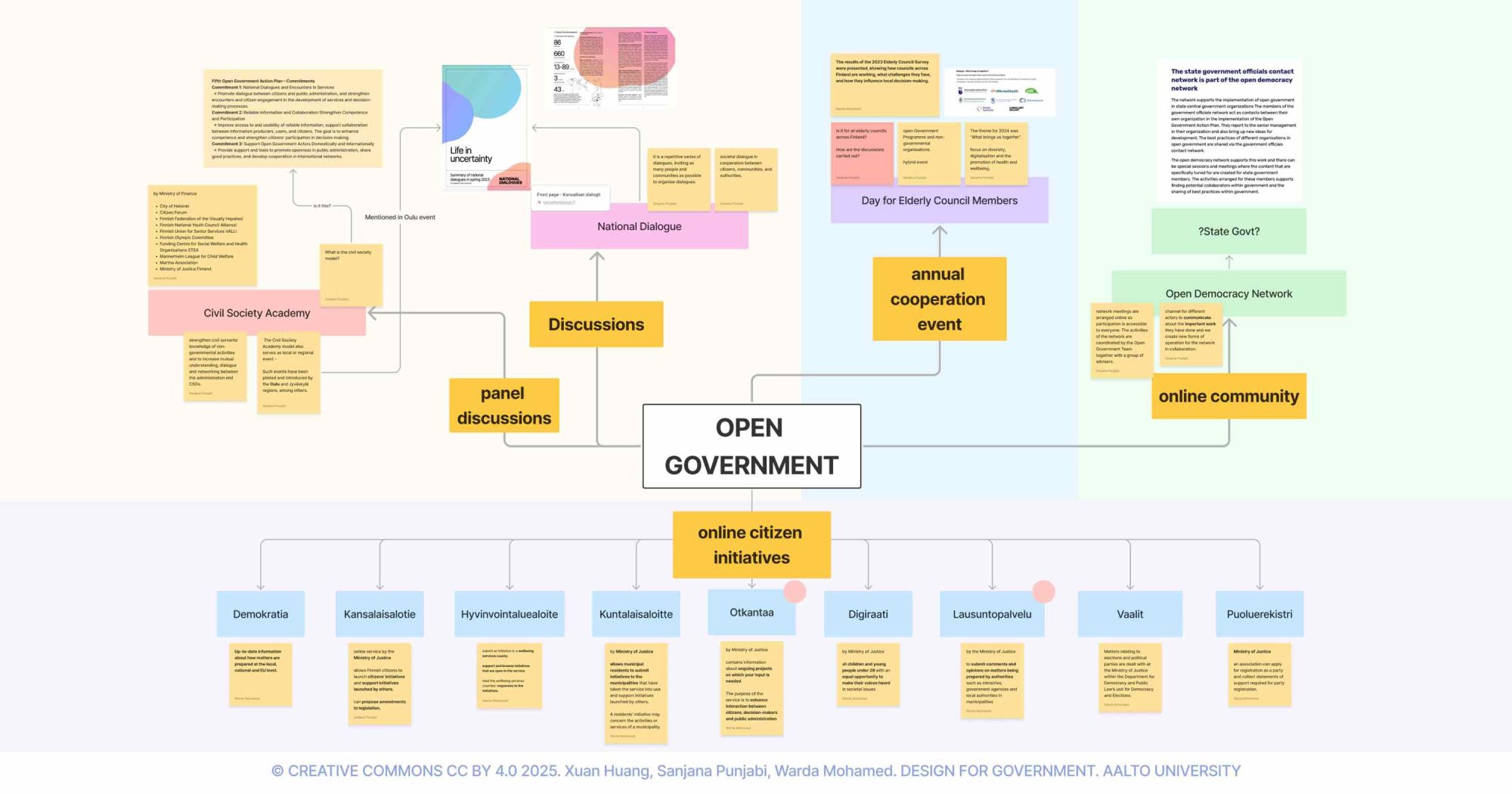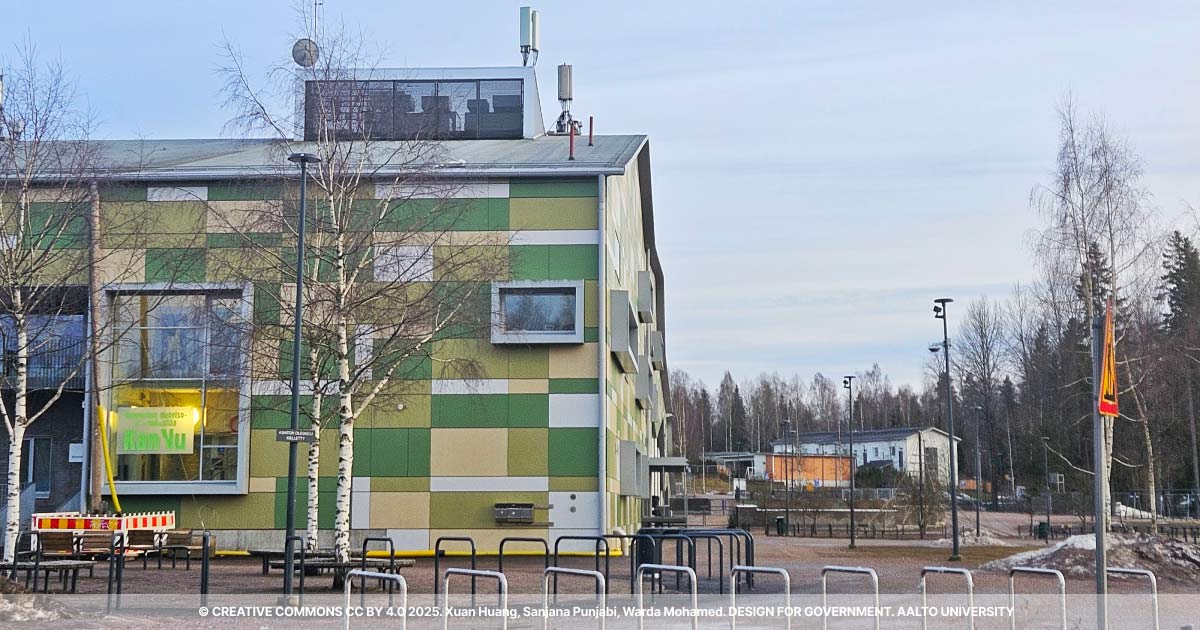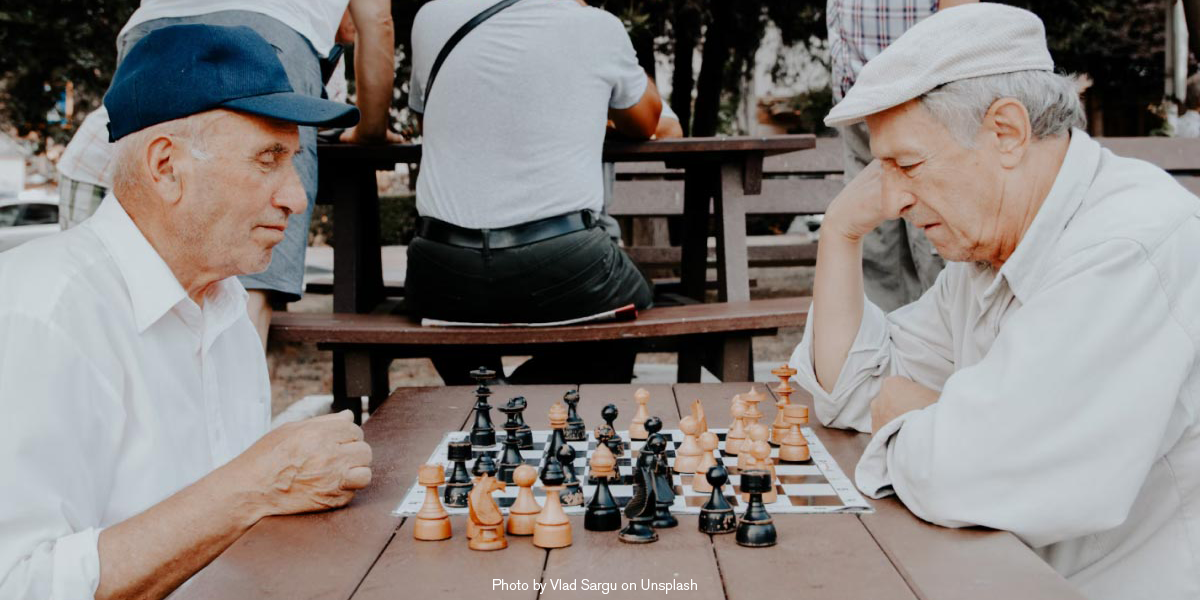This blog post reports on work-in-progress within the DfG course! The post is written by the workstream dealing with the Ministry of Finance’s brief on ‘Open government for an Age-Friendly Finland’ on the topic of ‘Elderly participation initiatives’. The group includes Xuan Huang from the Creative Sustainability (Aalto) and Environmental Design (Tongji University) program, Sanjana Punjabi from the Collaborative and Industrial Design program (Aalto), Warda Mohamed from the Collaborative and Industrial Design program (Aalto).
Written by: Xuan Huang
“What if this project doesn’t bring the expected benefits after intervention?”
“I don’t want this area to be developed—I want its natural beauty to be preserved!”
“How can you make this road to cut straight through our neighborhood?!”
Our three-person team huddled in the corner of Kannisto School’s lobby, holding our notebooks, staring in shock at the heated meeting unfolding before us. We quickly realized that public participation wasn’t just a peaceful and friendly discussion—it was far from a simple chat. As we watched the elderly residents debate passionately with the presenter, we began to understand just how important this kind of participation really was.
Who are we?
We are one of the workstreams that focuses on the topic of “Open Government”, one of the course’s briefs for this year. Our team’s main task is to dive deep into the “elderly participation initiatives” topic. Let me take you on a top-down journey to see how the government has built a vast network to support public participation.
Elderly participation network
Elderly participation initiatives help elderly people (65+ adults) stay involved in society and have a voice in decisions. They also encourage them to take part in community life, making sure everyone feels included and supported.

Figure 1: The Illustration of how different components are connected under the background of open government initiatives.
This chart shows how Finland’s Open Government Action Plan boosts public participation, especially for the elderly. As ways to do it, it focuses on discussion, annual cooperation events, online community, and online citizen initiatives to make democracy more inclusive.
By combining in-person and digital platforms, the government fosters an inclusive, interactive, and transparent system where citizens can actively participate in policies and governance. The government claims that special attention has been given to elderly participation to ensure they have a voice in decision-making. For example, the City of Helsinki states that “inclusive bodies help ensure the perspectives of young people, the elderly, and individuals with functional impairments are taken into account.” (City of Helsinki, n.d.). But with so many websites to navigate, it can make users feel overwhelmed. Can the elderly who are not familiar with digital devices really keep up?
Let’s keep this question in mind, and go deeper into the whole process: how do initiatives turn into efficient implementation?
How does it work?
Government documents should be inclusive and guiding. Because of this, there is a tendency for their contents to become abstract and hard to understand. Therefore, our goal was to understand how government documents develop from abstract plans to concrete actions that actually affect people’s lives. We tried to connect the “initiative”—where policies are first introduced with the “implementation” —where they turn into real actions to figure out the whole process.

Figure 2: The Illustration of how initiative turns into implementation.
In the case of the Open Gov initiative, it starts at the national level, where the Ministry of Finance initiates the process. Local actors, such as the City of Helsinki and Sitra, help bring these plans closer to communities. However, there’s a key difference between third-party organizations and the government—third parties start projects first and then observe their impact, while the government sets clear goals before moving to action. To make sure the elderly people join the whole process, institutions such as the Elderly Citizens Council always take actions to give the elderly a channel through which to speak up and be heard.
Back to the lobby
Now, after this bit of background information, let’s switch our perspective and go back to the meeting at the beginning of this article. This time, we’ll take a bottom-up view to see elderly participation initiatives in action.

Figure 3: The photo of the Kannisto School building where the meeting was arranged.
The meeting was held at Kannisto School in Vantaa, organized by the Cities of Vantaa and Tuusula. Around 30 people attended, most of them are elderly people. Unlike the way our team got this information (through the Internet), housing associations spread the word to nearby neighbourhoods to gather these participants.
The cities of Vantaa and Tuusula are planning a circular economy area between Vantaa’s Kiila and Tuusula’s Senkkerinmäki. They arranged this meeting which was open to everyone. This gave local people a chance to hear about the early plans and share their feedback.
At the meeting, a resident raised objections to the plan for a new road. Before this, she had drawn her own proposal and submitted it to the government, but hadn’t received any response. Therefore, she questioned whether the government was truly listening.
The Open Government Action Plan states that the government should improve its response to public feedback, especially by using citizens’ views more effectively in decision-making (Finnish Ministry of Finance, 2023). However, to us, the meeting revealed a trust gap between the government and the residents. While governments are open to discussion and working toward a more transparent decision-making process, the real challenge is ensuring that people’s voices are not just heard but also reflected in actual plans and actions. The goal of Open Government is to make policies clearer, communication smoother, and participation broader. But as this meeting showed, there is still a long way to go.
Conclusion
This blog explores how policies transform into real engagement under the topic of elderly participation initiatives. While the government has built a vast participation network, challenges remain—especially in ensuring that public feedback leads to real action. The meeting at Kannisto School highlighted the trust gap between government and elderly residents, showing that true participation is more than just listening—it requires meaningful responses. In the next step, we can explore more inclusive ways to collect public opinions and share information, as well as how to improve communication between policymakers and communities.
References
Design for Government brief (2024): https://dfg-course.aalto.fi/2025/new-projects-of-dfg-2025/
City of Helsinki. (n.d.). Participate in decision-making. Retrieved March 10, 2025, from https://www.hel.fi/en/decision-making/get-involved/participate-in-decision-making
Finnish Ministry of Finance. (2023). Open government action plan 2023–2027. Finnish Government.
Pekkola, E., Johanson, JE., Kujala, E. & Mykkänen, M. (2023). Chapter 4. The Structures of the Finnish Public Administration. In: Pekkola, E., Johanson, JE., Mykkänen, M. (eds) Finnish Public Administration. Governance and Public Management. Palgrave Macmillan, Cham
The DfG course runs for 14 weeks each spring – the 2025 course has now started and runs from 24th Feb to 27th May. It’s an advanced studio course in which students work in multidisciplinary teams to address project briefs commissioned by governmental ministries in Finland. The course proceeds through the spring as a series of teaching modules in which various research and design methods are applied to address the project briefs. Blog posts are written by student groups, in which they share news, experiences and insights from within the course activities and their project development. More information here about the DfG 2025 project briefs. Hold the date for the public finale on Tuesday 27th May!

